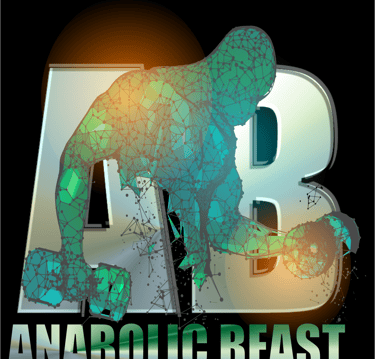Current stock purity 99.35% tested on 2022/08/16
Currently produced in 20ML Vials @ 2000mg/20ml (100mg/ml)
Trenbolone acetate, sold under brand names such as Finajet and Finaplix among others, is an androgen and anabolic steroid (AAS) medication which is used in veterinary medicine, specifically to increase the profitability of livestock by promoting muscle growth in cattle. It is given by injection into muscle.
Side effects of trenbolone acetate include symptoms of masculinization like acne, increased body hair growth, scalp hair loss, voice changes, and increased sexual desire. The drug is a synthetic androgen and anabolic steroid and hence is an agonist of the androgen receptor (AR), the biological target of androgens like testosterone and dihydrotestosterone (DHT). It has strong anabolic effects and highly androgenic effects, as well as potent progestogenic effects, and weak glucocorticoid effects. Trenbolone acetate is an androgen ester and a long-lasting prodrug of trenbolone in the body.
Trenbolone acetate was discovered in 1963 and was introduced for veterinary use in the early 1970s. In addition to its veterinary use, trenbolone acetate is used to improve physique and performance, and is purchased from black market suppliers. The drug is a controlled substance in many countries and so non-veterinary use is generally illicit.
Trenbolone acetate was never approved for use in humans and therefore guidelines for human consumption do not exist.[ However, athletes and bodybuilders have been using trenbolone acetate as a physique- and performance-enhancing drug for decades. There are a large number of benefits as a bodybuilder through using trenbolone acetate as an AAS. Unlike testosterone, trenbolone acetate does not cause any fluid retention while gaining muscle mass. This allows bodybuilders to appear leaner, and this is why it is more commonly used whilst preparing for competitive events. Trenbolone acetate does not convert into an estrogenic metabolite, and this results in a lack of estrogenic side effects. Trenbolone enanthate is also a very commonly used AAS and lasts much longer than trenbolone acetate with intramuscular injection.
Trenbolone acetate, like any other AAS, has many side effects. The strong androgenic nature of trenbolone acetate facilitates its tendency to produce virilization and this is why it is not recommended for women for physique- or performance-enhancing purposes. The side effects of trenbolone acetate are similar to other AAS; however, the negative side effects that are specifically facilitated by trenbolone acetate are as follows.
Androgenic
Trenbolone acetate has androgenic activity. Specific to the androgenic properties of trenbolone, common side effects of the AAS use include oily skin, acne, seborrhea, increased facial/body hair growth, and accelerated scalp hair loss. These side effects strongly rely on an individual's genetics and may not always occur in every individual. Men susceptible to hair loss related illnesses, such as baldness have a higher chance of becoming permanently bald with the use of trenbolone acetate. In women, voice deepening, hirsutism, clitoral enlargement, and virilization in general may occur.
Hypogonadism
Trenbolone acetate contributes greatly to muscle mass and feed efficiency; however, administration of the AAS suppresses natural testosterone production; i.e., it has the potential to cause hypogonadism. This is a common effect of all AAS; the only difference is the variation in how much they suppress in comparison to others.
Cardiovascular
Administration of any AAS can lead to cardiovascular issues. Trenbolone acetate can have a negative and strong impact on cholesterol through suppressing both high-density lipoprotein (HDL) cholesterol ("good" cholesterol) and increasing low-density lipoprotein (LDL) cholesterol ("bad" cholesterol). When compared to oral AAS, trenbolone acetate has a stronger negative effect on cholesterol levels. This negative effect is much more severe with the use of injectable AAS, particularly trenbolone acetate.
"Tren cough"
The exact mechanisms underlying the cause of the tren cough is not known. However, trenbolone acetate's androgenic effect activates a variety of lipid-like active compounds which are called prostaglandins. Many of these prostaglandins are inflammatory and vasoconstrictive. Prostaglandins are signalled through two varying pathways cyclooxygenase (COX) (Also known as: prostaglandin-endoperoxide synthase) and lipoxygenases (LOX) . Vasoconstriction of the muscular wall of the bronchus in the lungs is what triggers this cough reaction. Trenbolone increases an inflammatory mediator peptide called bradykinin which facilitates the dilation of blood vessels. The bradykinin peptide is well known to promote a cough reaction associated with ACE inhibitor medications prescribed for hypertension.
Estrogenic and progestogenic
No form of trenbolone, including trenbolone acetate, is estrogenic. Excess fluid retention is not possible with the administration of this AAS as a result of its not being estrogenic as opposed to testosterone. However, due to trenbolone's potent progestogenic activity, gynecomastia, which is characterized by development and swelling of breast tissue, may still be possible. Stimulation of estrogenic mechanisms are enforced by progestogenic activity as trenbolone acetate and its compounds bind with high affinity to the progesterone receptor. It has been assumed that gynecomastia as a result of trenbolone use is due to a buildup of the hormone prolactin; however, a variety of studies conclude that it is the progestogenic activity of trenbolone promoting this and not prolactin. Trenbolone also has a negative impact on blood pressure, but it does not appear to negatively affect most healthy adult men in this way.






